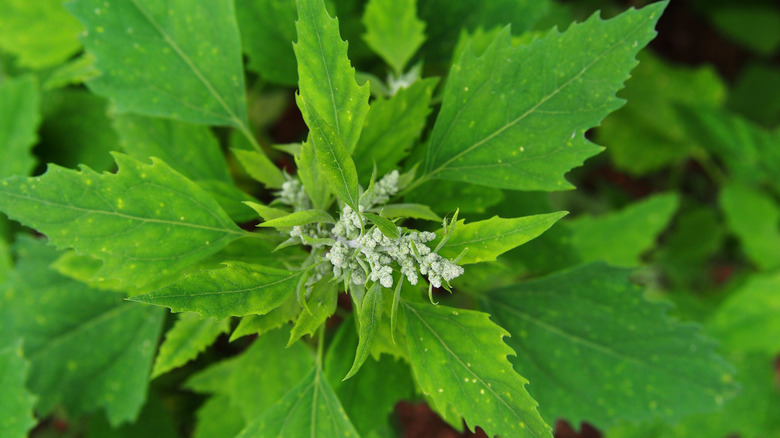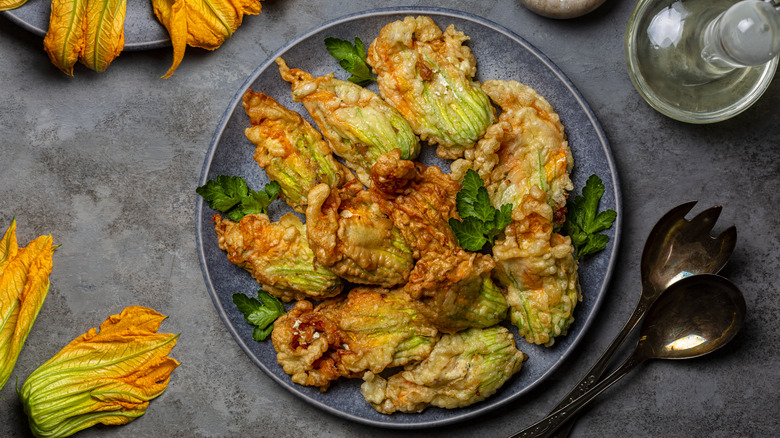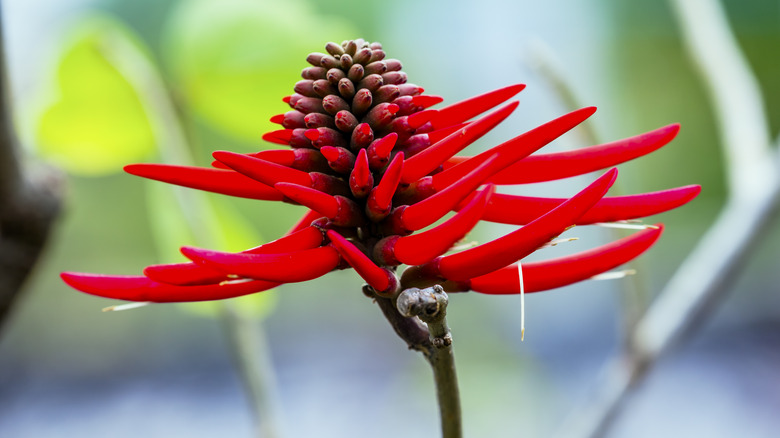Quelites: The Nutritious Foundation Of Mexican Cuisine That Should Be On Your Radar
While many have at least heard that Mexican food can be traced all the way back to 7000 BC, and what people outside the country recognize as "Mexican Food" is different inside Mexico, pork and corn are still widely, and rightly, perceived as touchstones of the cuisine. This list of Traditional Mexican food dishes from Daily Meal includes suggestions to try those tasty pockets of pan-fried masa, which often include beans, cheese, and meat, called gorditas. It also includes links to recipes for pork pozole, a delicious stew made with meat and hominy as central ingredients.
Salsas are another beloved key to Mexican cooking. They represent the country's creative use and deep knowledge of fresh local ingredients, but there is one that's too often overlooked. The wide and varied use of greens in Mexican cooking is much less known. Yes, cilantro is a wonderful garnish, but before colonization, the Mexican diet was much more reliant on food that grew from the ground. This includes a beloved favorite, quelites, frequently called lamb's quarters.
More than lamb's quarters
That's not to say that the meats and cheeses embraced today are anything less than treasures of their own kind, but what we might call greens — and the Mexican people call quelites — nourish the Mexican people with a cornucopia of tender edible leaves, vines, and flowers.
Many have heard "quelites" and instantly thought of what is called lamb's quarters in English. Though widely interpreted as such for many years, even as people of Mexican roots sought to re-introduce the healthy aspects of their country's cuisine, today the term is better understood as edible greens. The root of the word is even understood to come from the Nahuatl language, which used "quilitl" to refer to greens that were tender and edible.
Among the quelites gaining popularity are squash blossoms, which have become an eye-popping choice among top chefs around the country, not only in Mexican cuisine. Stuffed and sometimes fried, squash blossoms are a beautiful way to eat literal flowers. Otherwise, the greens may often be considered weeds, as in the case of dandelions, another healthy, edible flower — and type of quelite. Wild greens, such as epazote, are included under the quelite umbrella, as is the most nutritious vegetable you could have, watercress, known as berro in Spanish.
Flowers for breakfast
As a promotion of quelites inside Mexico, the National Commission for the Knowledge and Use of Biodiversity released a calendar for 2020 called "Quelites de Mexico," which presented a different type of wild Mexican green each month. Every month includes photos of the plant, its flower, and its appearance both wild in the field and harvested with leaves as they would appear in the market. Each green also included a recipe suggestion, an attempt at reintroducing indigenous knowledge to a people who might have been estranged from it. The end of the calendar even included photos of over 30 different quelites, including squash flowers, bright red flores de colorin, and flowers from the yuca and squash plants.
Preparations of quelites might call for steaming, boiling, pan frying, steeping, or raw presentation inside a simple salad, on tacos, or in many other recipes. Flor de colorin can be served as food, tea, or steamed, for example, while the looping squash vines may be turned into a soup.
The Meso-American diet, pre-contact, long acknowledged as nutritionally sound, varied, and balanced, is still reflected in the use of quelites inside Mexico. You just have to know where to look.


